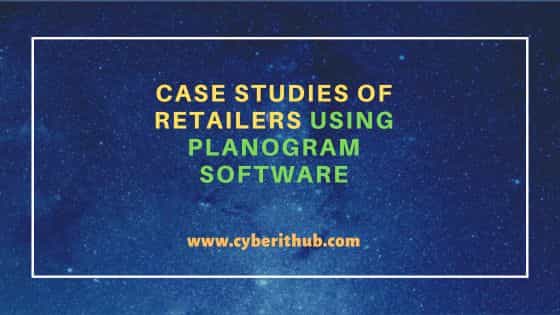Table of Contents

Case Studies of Retailers Using Planogram Software
The retail industry is constantly evolving, and staying ahead of the competition requires innovative solutions and strategies. One such solution that has gained traction is the use of planogram software. By leveraging this technology, retailers can optimize their store layouts, improve visual merchandising, and drive sales. In this article, we will explore real-life case studies of retailers who have successfully implemented planogram software and witnessed significant improvements in their operations and bottom line.
1. Enhancing Visual Merchandising with Retail Planograms
Visual merchandising plays a crucial role in capturing the attention of customers and influencing their purchasing decisions. By strategically placing products in the right locations, retailers can maximize sales and create an engaging shopping experience. Retailer A, for confidentiality reasons we cannot disclose their name, recognized the need to enhance their visual merchandising efforts and decided to implement planogram software.
With the help of specialized retail planogram software, Retailer A was able to create realistic and interactive store plans. They utilized product photography and simple 3D modeling to visualize the optimal placement of shelving, displays, and floor space. This enabled them to have the right product in the right place at the right time, while minimizing wasted space. The software also offered pre-built templates and reporting capabilities, allowing Retailer A to optimize their layout based on sales results.
The benefits of using planogram software were evident for Retailer A. They were able to experiment with different store and shelving layouts without physically moving anything. This saved time and resources while allowing them to plan for the introduction of new product lines. By measuring the sales of products against recorded planograms, Retailer A gained valuable insights into the effectiveness of their visual merchandising efforts. This data-driven approach enabled them to make informed decisions and drive better results.
2. Streamlining Buying and Assortment Planning
Efficient buying and assortment planning are critical for retailers to optimize their inventory and meet customer demands. Retailer B recognized the need for a more streamlined buying process and turned to planogram software for a solution. They wanted to automate their merchandising processes and improve the interaction between their headquarters and operating stores.
Retailer B chose to automate their processes rather than increasing human resources. They selected a planogram software called Planogram Optimization system by Leafio.ai, which provided them with the necessary tools to design the arrangement of goods and build decision trees. This software allowed them to see the work of both the headquarters and the operating stores, facilitating better communication and collaboration.
With the implementation of the LEAFIO system, Retailer B experienced significant changes in their merchandising processes. The software improved assortment planning, order management, and approval of goods. The operating staff at the stores received more feedback from the central office and became more involved in the merchandising process. This collaborative approach resulted in better displays and improved customer experience.
Additionally, the LEAFIO system provided Retailer B with valuable quantitative data. They could track the amount of each product, its shelf location, and its presence in each store. This information transformed their interaction with suppliers, allowing them to negotiate effectively and demonstrate the product participation interest. By integrating planograms into their merchandising duties, Retailer B achieved better inventory management and increased sales.
3. Optimizing Store Clustering and Merchandising Strategies
Store clustering is a powerful technique that helps retailers optimize their store layouts and tailor their assortments to specific customer preferences. Retailer C, a leading retailer of women's fashion apparel, recognized the potential of store clustering and sought a solution to maximize their business opportunities. They turned to planogram software to uncover untapped potential and improve their merchandising strategies.
By conducting a retail store clustering analysis with the help of planogram software, Retailer C identified missed opportunities worth millions of dollars. The analysis revealed misallocated buy dollars, which were quickly corrected using the Clustering application module of the software. This correction resulted in a $40 million improvement in their buying decisions.
The planogram software allowed Retailer C to upload data, track product presentations, shelf locations, and store-specific information. The central office had real-time access to this data, enabling them to monitor and control the implementation of planograms. External auditors were also engaged to ensure planogram compliance, providing a comprehensive evaluation of each store's merchandising duties.
Furthermore, Retailer C emphasized the importance of customer preferences in their merchandising strategies. While planograms created at the headquarters provided a solid foundation, the on-site staff played a crucial role in making the displays successful in reality. The software facilitated clear feedback and quick adjustments, ensuring that the shelves looked beautiful and the products were displayed according to defined rules.
Conclusion
These case studies highlight the transformative power of planogram software in the retail industry. By leveraging this technology, retailers can enhance their visual merchandising efforts, streamline buying and assortment planning, and optimize store clustering and merchandising strategies. The implementation of planogram software has proven to be a game-changer for retailers, enabling them to make data-driven decisions, improve inventory management, and ultimately drive sales and profitability.
As the retail industry continues to evolve, it is crucial for retailers to embrace innovative solutions like planogram software. By investing in technology and leveraging data-driven insights, retailers can stay ahead of the competition and create engaging shopping experiences for their customers. The success stories of Retailer A, Retailer B, and Retailer C serve as inspiration for other retailers looking to unlock their full potential through planogram software.
Remember, the key to success lies in understanding the unique needs of your business, selecting the right planogram software, and continuously analyzing and optimizing your strategies based on data-driven insights. With the right tools and a forward-thinking mindset, you can unlock the full potential of your retail operations and drive sustainable growth.

